Welcome to a new interview from the series “Cool initiatives”! This series introduces you to people who are doing cool stuff in Amsterdam and the Netherlands, be it creative endeavours, sustainable initiatives or other type of cool activities. This time, meet Adanya Dunn.
She introduces herself as “Adanya — rhyming with lasagna”. She is smart, kind and energetic, and a true force of nature; has an amazing voice and many amazing ideas that she brings to life. When you meet her, you can’t help but feel inspired and caught in the swirl of creative energy that surrounds her.
This is Adanya Dunn, one of the founders of Red Light Arts and Culture, a very cool initiative in Amsterdam. I was following their activity for a while before she contacted me for a collaboration, and I was so glad she did! We’ve met at the event “Queer Sex Workers’ Day“, organised during Queer & Pride Amsterdam. The moment we’ve met, I felt like meeting an old friend. I’ve spent that day tagging along, while Adanya and the team were busy planning, moving, running in between locations in the Red Light District. When I left, I knew we’ll meet and collaborate again.
This interview was done in autumn 2023, but its publication had to be postponed because I’ve had a break from the blog to deal with personal issues. Thanks Adanya for answering my questions and being so patient!

Hi Adanya, thanks for agreeing to this interview! Tell me a bit about yourself.
A: Hi Dana! Thanks so much for inviting me for an interview with you! I’m so happy to connect again.
My name is Adanya Dunn (she/her) and I’m a queer intersectional feminist, professional opera singer (mezzo-soprano), multidisciplinary artist, activist, and creative entrepreneur. I grew up in Toronto and am Canadian-Bulgarian. Studies brought me to Amsterdam, where I lived in the Red Light District for about 3 years. While parts of my work can be done remotely, projects take me to various parts of the globe.
To make sense of the world and figure myself out, I turn to music, art, dance, poetry, and comedy – and am consistently passionate about collaboration. My motto has been, “I want to make cool sh*t with cool people”. And this can take many forms. In addition to singing, I work as a freelance producer, grant writer, photographer, consultant, and web developer.
I’m an avid learner and reader, curious about people’s experiences, and about science and nature in general. I love (attempting) to learn languages and have hopes of one day mastering with fluency the declination of the German article “the” (iykyk). I’ve been vegan for 15 years and am quite into the whole second-hand, thrifting, slow fashion, DIY, and repurposing scene(s).
Art and culture is not something people have in mind when thinking about the Red Light district. How did the idea of Red Light Arts and Culture came about?
A: I lived in the Red Light District for three years and am one of the founders of Red Light Arts & Culture (RLAC) along with Albert Manders, Hinse Mutter, and Pia Pleijsier.
The thing I immediately noticed when I first moved into the neighbourhood, was how close the apartment felt to being right inside the street. I had always thought how wonderful and interesting it would be to make an art installation or to have a performance from my living space to the area, adding to the variety of people and experiences there.
Many people don’t know that the Red Light District is home to hundreds of artists and creatives. In addition, there are many government-subsidized units that provide spaces to artists, from ateliers to living quarters. There are also many student accommodations for people at the University of the Arts and the Conservatory of Amsterdam.
I was living in one of these music residences, and during the pandemic, I was practicing some pieces with my piano-voice duo, who was also a housemate. The weather was so beautiful and we had our windows open… Whenever we would practice our pieces, people from their balconies across the canal would come out and listen. People would stop on the street below and look up. Once we finished a song, we were surprised by the applause that was happening just from the people who happened to be around. Hearing what’s going on inside is not something that usually happens in the area.
It was clear that people in the neighbourhood were craving connection and wanted some way to enjoy culture still together and in a way that was safe. In chatting with another housemate at the time, Pia, we talked about how wonderful it would be to do little performances from our doorway just out onto the street at a time when people couldn’t go beyond their homes. Many people were isolated during this time, but our little music building had each other as our community and we wanted to share that experience.
A few weeks after initially discussing the idea together, I ran into another neighbour who was involved in an organization called We Live Here. I mentioned to the neighbour that we had this idea about having some music live from our doorway, and he said that his neighbours were also musicians and had been talking about doing that very same thing!
A few WhatsApp messages later, myself and Pia and our two new neighbour friends Albert & Hinse from one canal over were all sitting outside discussing what we could do together. It all started with our circle of people and residents who were also musicians, bringing front-door concerts for people to enjoy.
We then expanded to include additional team members, friends who volunteered their time as musicians, and a photographer, and videographer, we gathered our first materials and I built the website. Here is our trailer video!
We shortly after received our first Grant from the AFK in 2020. Then in 2021, I won the Alumni Enterprise Award from the Music Academy of the West for our organisation ($20,000USD) which really helped to launch our major events and secure additional funding. Since then, we’ve been writing and receiving grants from both national and international organisations. While the team currently works voluntarily, we strive to pay our artists a competitive and equitable wage.
When restrictions started to lift, we knew that this idea had to continue. It wasn’t just about providing something in the time of lockdowns. This need was always there – a desire to share in collective and connective experiences close to home – regardless of circumstance. We were able to do this through what we personally knew best – through art and culture. With the lifting of restrictions, we found ourselves even more able to connect with the diversity of the community that is present in the area.
We started to build this network of local artists and musicians in the area. Now we could find special performance opportunities and locations as things started to open up again. We’d have the most enriching conversations with shop owners and businesses, some established for hundreds of years and some having just moved to the area. Also, with the reactivation of different community initiatives and programs specific to various communities in the Red Light District, we could start collaborating with them in a creative way.
In addition to working with physical store front locations, art galleries, and cafés, we have also collaborated with Transunited, the Salvation Army, the Prostitution Information Center, We Live Here, Museum Ons’ Lieve Heer op Solder, and the Oude Kerk.
It’s been amazing to see how through arts and culture we are able to bring together the different communities in the Wallen through our activities and programming, playing a vital role in innovation, development across economic sectors, addressing social issues, and promoting social cohesion.

What kind of events does RLAC organises?
A: RLAC organises and hosts various activities and programs. All of our events our free and we welcome donations. We offer programming in both Dutch and English and most of our events are followed by a (free) Borrel with food and drink!
Our projects include classical, jazz, and indie musicians, dancers, painters, visual artists, storytellers, poets, and workshops! We have a monthly series called “We Make Art Here” resuming this fall, and we have our ongoing InsideOut Pop-Up Concerts which are surprise mini-concerts at multiple unsuspecting locations in the Wallen during an afternoon!
Within all artistic disciplines, we commission new musical works, produce narrative and artistic films specifically for online release, and create special live performance recordings.
Here’s a link to our playlist from our 5-part video series called InsideOut: Red Light, Connected | music and stories from behind Amsterdam’s doors. Produced in 2021, this digital walking concert tour takes viewers along unique locations in the Red Light District, shares the stories of these places as told by their people, and connects them to special musical performances.
One of our largest events was in the summer of 2022 called Wandelconcert: A Performance Journey through the Red Light District – sex, gender, and self-expression. The audience rotated between 3 special locations in the Red Light District where there were 3 distinct yet connected performances by different groups of local artists: queer female composers with classical chamber music ensemble at Casa Rosso Sex Theater, an interdisciplinary dance performance on capitalism and consumption in a church’s side room, and an immerse storytelling experience on queer sex work in the living room of a local resident. Find here a playlist of the live event recordings.
We’ve had two editions of the Pop-In Cultural Day in the Red Light District (2022 & 2023) and hope to indeed make this an annual event. This one-day event lasts approximately 6 hours and involves 12 locations, 36 performances (music and dance), and includes art exhibitions. We specifically curate and match local artists and performers in unusual and often times unsuspecting locations throughout the Wallen and they will work alongside each other to develop a short program specific to that place. The audience visits different spaces and discovers local talent, while the location host also shares about the history of the place and their experiences in the area. All performers and artists share directly with the audiences about their pieces as well.
In addition to our own projects, we are often asked to provide programming or music with other neighbourhood organisations or invited to co-develop and program ideas together. We have collaborated with organisations such as the Oude Kerk, Wallen Festival, Geefmarkt, and Red Light Jazz. We’re also looking to our community – engaging with feedback and taking up proposals – so we can explore new and exciting ideas that bring people together in creative ways.

There is a heated debate on the topic of moving the Red Light District from De Wallen, and I know RLAC took a public stance for the rights of the SW community. What can you tell me about that? Why do you think the Red Light District should remain where it is?
A: We support the decisions and rights of sex workers. Sex workers are to be centred in any conversation that involves this ongoing discussion and policy evaluation about moving the Red Light District. So any discussion or plan that is not in direct contact with sex workers and that doesn’t actively seek input, feedback, and open dialogue with the SW community (by building trust, establishing relationships, and doing the work that goes beyond performative allyship), is not a plan that we support.
It’s a delicate balance between cultural heritage, economics, safety, and social considerations, and can only be properly discussed with sex workers’ direct involvement. There are currently talks of alternative plans counter to the city’s, that do incorporate the input of sex workers alongside additional community members. Discussing strategies that address the needs of safety, autonomy, economic well-being, and community, must be approached in a holistic way so that it reduces harm and increases well-being overall.
Did you encounter any challenges in implementing the RLAC projects and what were they?
A: Right now, we are in a phase of professionalizing the organization and hope that in the next couple of years, we offer compensation to team members since we’ve all been working voluntarily. This would help us have more dedicated time and energy to bringing forth new concepts and programs! We’re often having to balance RLAC projects with full-time jobs, education, and personal responsibilities, so life can get pretty busy at times!
What is the biggest reward you got from working on this project?
A: With RLAC, I get to learn every day – constantly discovering a new place/space in the area and learning about its history and about the person who’s sharing it… Learn from our collaborators and partners about their ideas, interactions, and inputs… And from our audiences – from tourists to residents to students to workers to shop owners to other artists – finding out what’s meaningful and important to them, learning from their lived experiences.
The feeling people share after participating in one of our events, either as an audience or as a performer, artist, or location host, is something that touches me deeply. People really have a sense of participating in something especially for them. Because our events are usually in small, unusual spaces, this helps to dismantle some of the stigma of the experience of art and culture of people in a certain space like a concert hall, for a certain price, for a certain demographic, at a certain time… With our variety of planned and “unplanned” events, where artists and performers are literally beside the audience, where everyone interacts with one another, where the historical space influences the program, and where we can all learn from one another… I feel so lucky to be part of creating spaces and shared experiences where people can (re)connect and engage in meaningful conversations.
We are part of the social and creative fabric of the neighbourhood, and our organization can function as the thread that sews together a tapestry of community and inspiration.

Being an opera singer, you also have to travel a lot for your concerts. How do you manage to find time for everything? And where can we see you performing next?
A: I’m still learning to manage my time to make space for everything I want to do! My schedule spans 4 different time zones at any given moment, and I’m in a different city every couple months. I manage my time in the following ways: Reminders App, Calendar App, a whiteboard with a dry-erase marker, and my daily journal. These digital and analogue methods are life savers for me 🙂
I have a couple more opera gigs in Canada in 2024, which have yet to be officially announced, and I might just be making an appearance in Latvia! Details will be announced on my website: Adanya Dunn. Aside from my performing, this year I’m developing my original musical compositions and creative writing pieces. All of my projects can be found on my Instagram as well.
You can also check out my electronic duo, #opeREMIX, a poly-genre electro-techno opera-improvisation project, with myself and a disruptive sound technologist (Adam John Williams) at the core, with additional collaborators www.operemix.com. And I’m still connected with the work of FAWN Chamber Creative in Toronto, an experimental music and opera collective that explores the intersections between art forms and audiences.
What can you tell me about RLAC’s plans for the future?
A: We hope to expand our team and further professionalize our organization. We have yet to officially announce some upcoming larger-scale projects, but what I can share for now is that we are back this fall with Pop-Up Concerts and our monthly performance series “We Make Art Here” returns at We Live Here, featuring local professional musicians, poets, and artists, and that always culminates in a Borrel.
If you sign up for our newsletter (once per month), we share about our upcoming events! And for more real-time updates, check us out on Instagram!
All of our events are free and donations are always welcome :).
You lived in the Red Light District, a neighbourhood that many consider it to be too crowded or noisy, for around 3 years. How was your experience here and what do you love the most about this neighbourhood?
A: There’s a special energy that pulses through the area. It’s a constant cascade of symphonies changing its tune day and night – the shifting sounds of people, places, and experiences with the familiar and “on-the-clock” church bell chime every 15 minutes coming from what feels like any direction you turn. It’s a vibrant tapestry of cultures, backgrounds, and experiences, and holds the potential as a place where we can celebrate our differences and explore the universality of our humanity.

What are three favourite places in the Red Light District?
A: Because there are so many spots that are my favourite, I’ll share with you 3 of my favourite streets: Bethaniënstraat, all the way up and down both sides of the Oudezijds Achterburgwal, and the top of the Zeedijk just as you come in from Central Station.
What or who inspires you in all the work you’re doing?
A: I am in awe and wonder of nature and science. I’m inspired by the people I meet in real life and in books – by personal narratives and descriptive fairytales. Stories inspire me and I’m motivated by curiosity.
What would be a message you’d want to share with the entire world?
A: Be curious.
Be kind.
Listen and Love.
—
Adanya Dunn, queer intersectional feminist, professional opera singer (mezzo-soprano), multidisciplinary artist, activist, and creative entrepreneur.
Amsterdam, 2023
Stay tuned for more and follow Amsterdamian on Instagram and Facebook for more stories about life in the Netherlands. Please share this post if you liked it!
Check out my photo book: Amsterdam Through the Seasons!
Love what you’re reading? Support my work with a small donation.

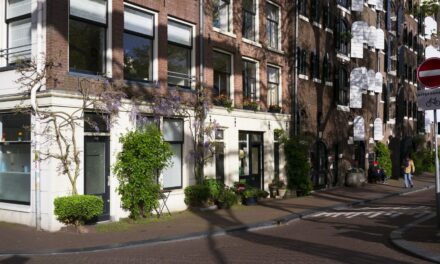
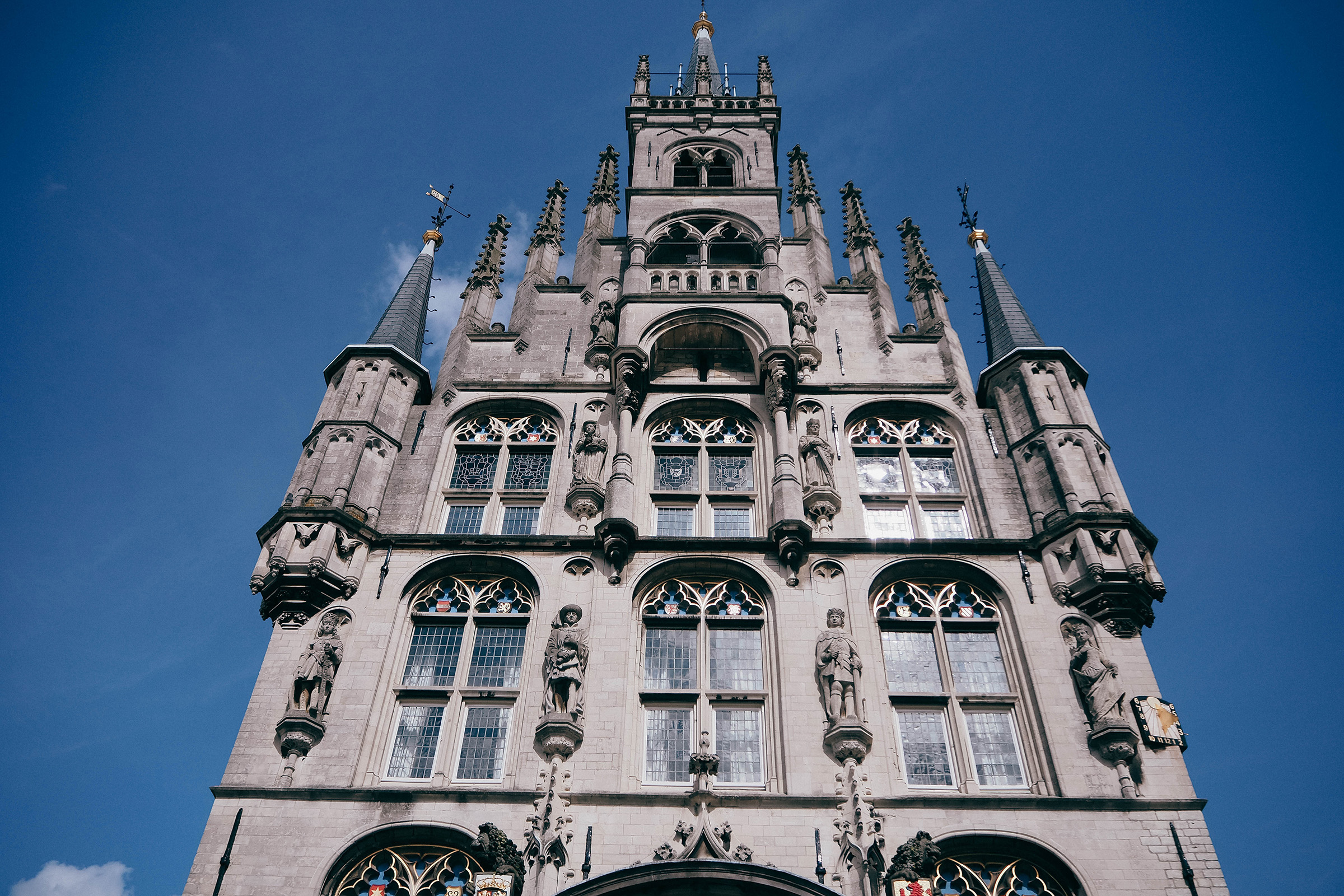
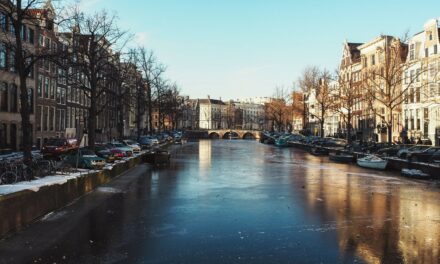

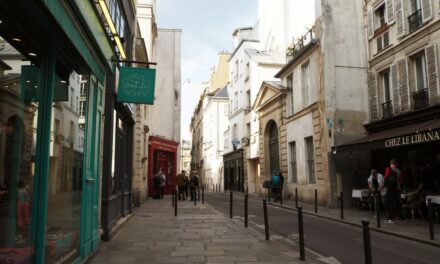

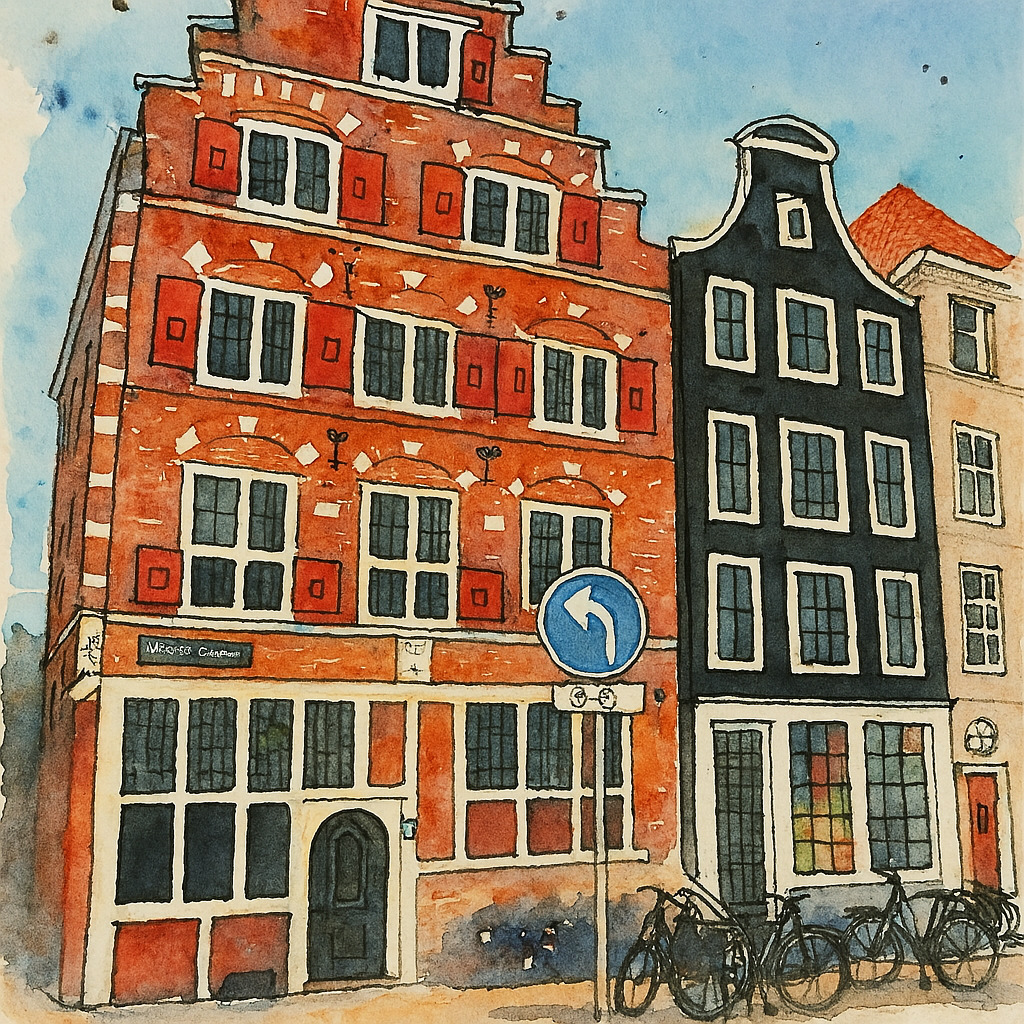

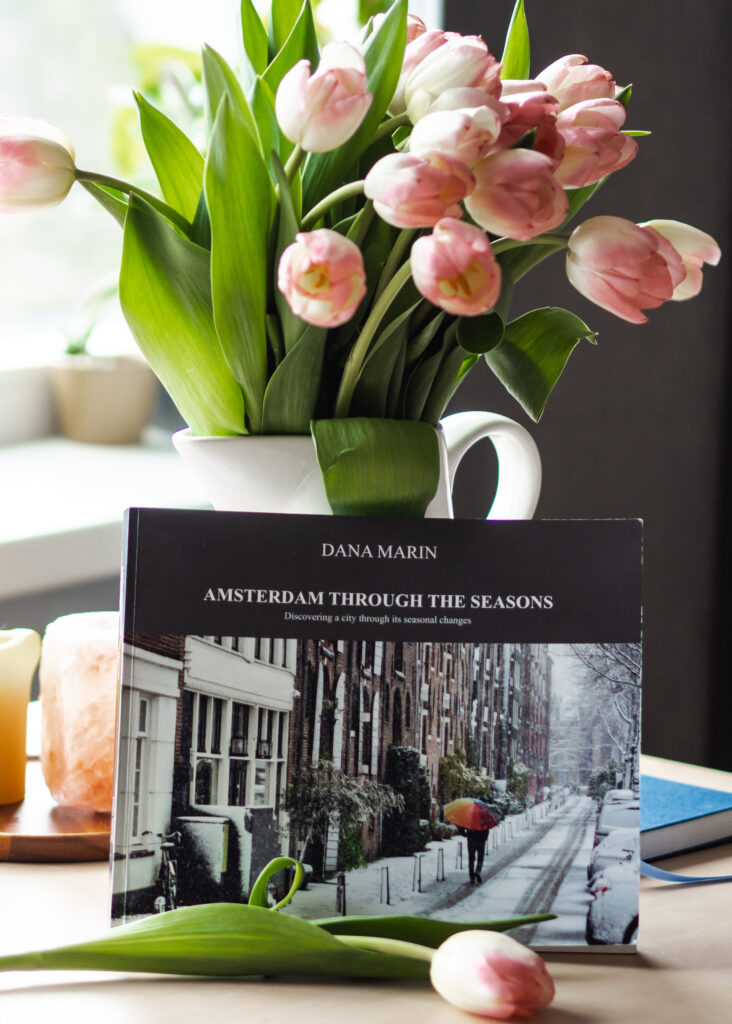

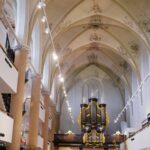
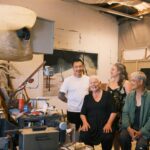

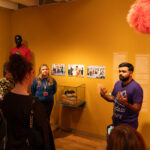

Trackbacks/Pingbacks